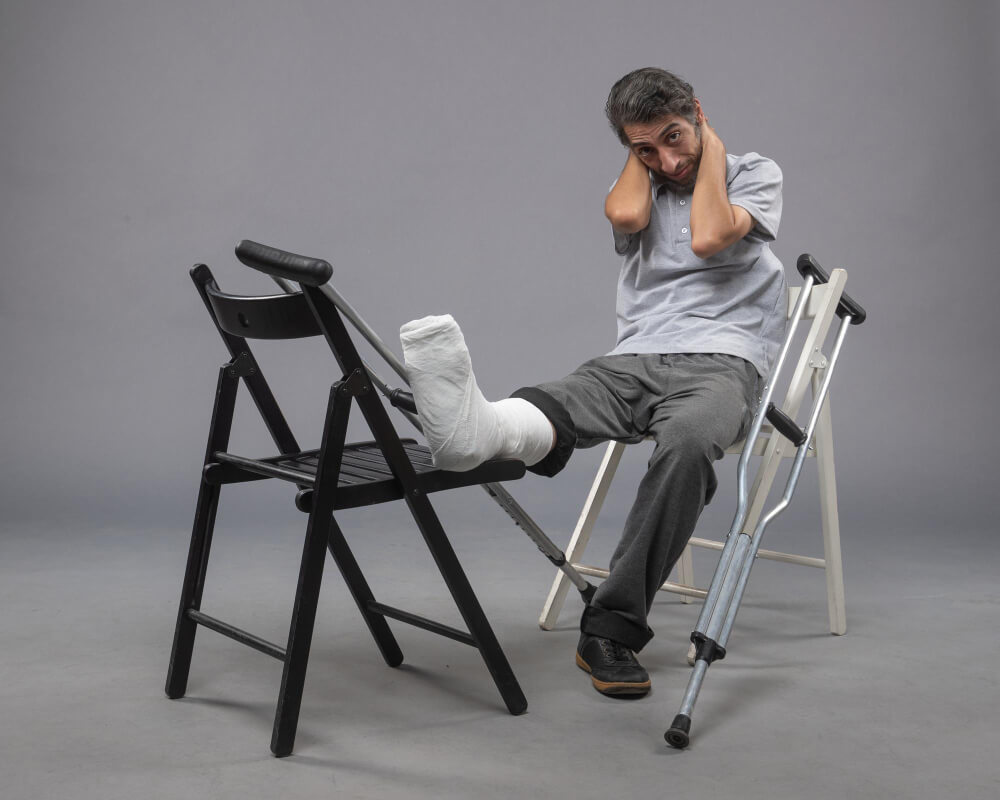Hidden Cracks: Understanding Stress Fractures and How to Avoid Them
Pain can be a nagging reminder that something’s not quite right in your body. But sometimes, the source of that pain isn’t a dramatic break, but rather a hidden enemy – a stress fracture. Unlike a regular fracture caused by a sudden impact, stress fractures develop gradually due to repetitive stress on a bone. These tiny cracks can cause significant pain and disrupt your fitness routine if left unchecked.
This article delves into the world of stress fractures, shedding light on their causes, symptoms, and most importantly, how to avoid them. Whether you’re a seasoned athlete or simply enjoy an active lifestyle, understanding these hidden cracks can help you stay on your feet and moving with confidence.
The Lowdown on Stress Fractures:
What are Stress Fractures?
Unlike a typical fracture caused by a fall or blow, stress fractures develop over time due to repetitive, forceful activities. These activities put excessive stress on a particular bone, causing tiny cracks to form.
Who’s at Risk?
Anyone who participates in activities that involve repetitive impact on specific bones is at risk of developing stress fractures. However, some groups are at higher risk, including:
- Athletes: Runners, dancers, gymnasts, and athletes in high-impact sports like basketball and tennis are particularly susceptible.
- Individuals with High-Impact Activities: Activities like military training, marching, or jobs requiring repetitive jumping or forceful movements can increase the risk.
- People with Bone Weaknesses: Conditions like osteoporosis or low bone density can make individuals more prone to stress fractures.
- Women: Hormonal changes, particularly during menopause, can make women more susceptible to stress fractures.
Sneaky Symptoms: Recognizing the Signs of a Stress Fracture
Stress fractures can be tricky because the symptoms can be subtle and mimic other injuries. However, paying attention to your body can help you identify potential problems early on. Here are some key signs to watch out for:
- Pain During Activity: This is the most common symptom. You might experience a dull ache or pain at the affected area, which worsens with activity and improves with rest.
- Tenderness: The area around the suspected fracture might feel tender to the touch, even without any visible swelling or bruising.
- Swelling or Bruising: While not always present, some stress fractures might cause mild swelling or bruising around the affected bone.
- Change in Performance: You might notice a decrease in your performance, such as experiencing more fatigue or difficulty maintaining your usual pace during activities.
It’s important to note: Pain is a crucial indicator! If you experience persistent pain during activity that doesn’t improve with rest, consult a healthcare professional immediately. Early diagnosis is key to preventing further damage and ensuring a smooth recovery.
Prevention is Key: Strategies to Avoid Hidden Cracks
The good news is that there are effective ways to minimize your risk of developing stress fractures. Here are some preventive measures to incorporate into your active lifestyle:
- Proper Training and Form:
- Gradual Progression: Avoid increasing your training intensity or mileage too quickly. Gradually increase distance, duration, and intensity to allow your bones and muscles to adapt to the stress.
- Proper Form: Pay close attention to proper form during exercises and activities. Poor form can put unnecessary stress on specific bones, increasing the risk of fractures. Consider consulting a coach or trainer to ensure you’re performing exercises correctly.
- Cross-Training: Don’t become a one-trick pony! Incorporating various activities into your routine can help prevent overuse injuries. For example, if you’re a runner, try swimming, cycling, or yoga as alternative forms of exercise. This allows you to maintain overall fitness while reducing stress on specific bones.
- Strong Bones, Strong Body: Maintaining strong bones is essential for overall health and preventing stress fractures. Here are some ways to keep your bones healthy:
- Balanced Diet: Include plenty of calcium-rich foods in your diet like dairy products, leafy green vegetables, and fortified foods.
- Vitamin D: Vitamin D is crucial for calcium absorption. Ensure you get enough sunlight exposure or consider taking a vitamin D supplement after consulting your doctor.
- Weight-Bearing Exercises: Regularly engaging in weight-bearing exercises like walking, running, or weight training helps strengthen bones and improve bone density.
- Listen to Your Body: This might sound simple, but it’s incredibly important. Pay attention to your body’s signals. If you experience persistent pain, take a break from the activity and allow your body time to rest. Pushing through pain can worsen a stress fracture and prolong your recovery time.


